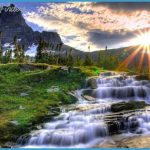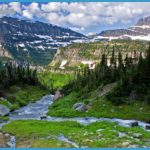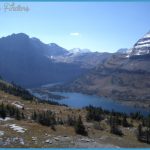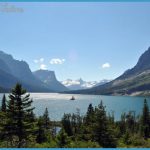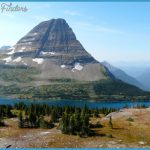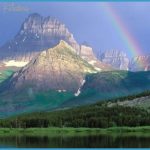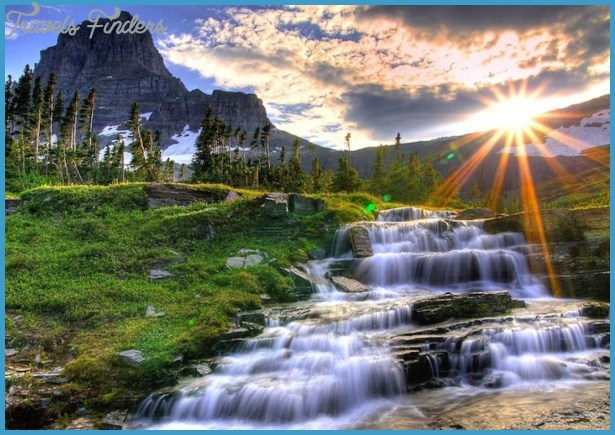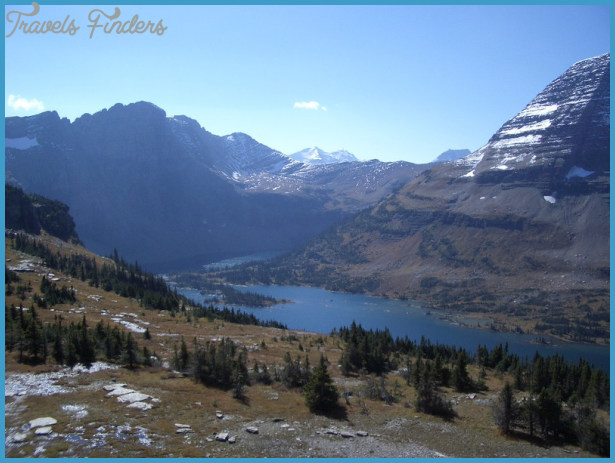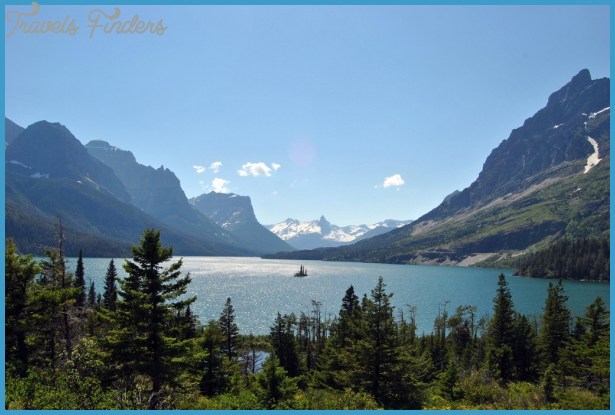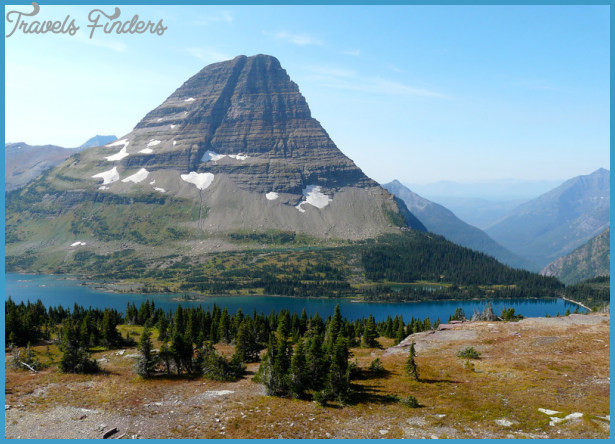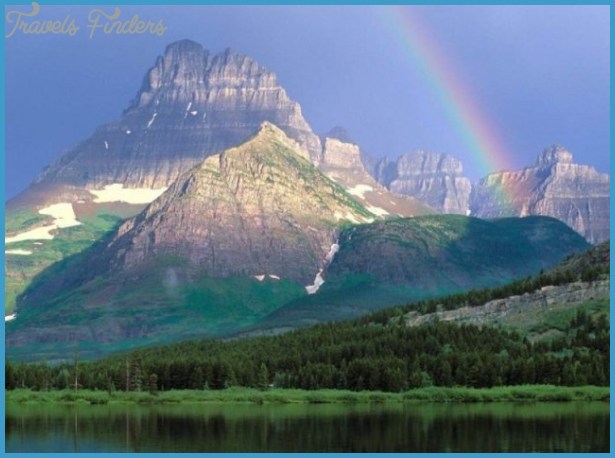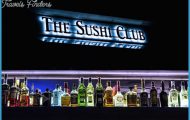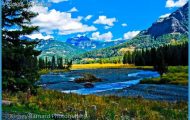HITTING THE ROAD
Assuming your journey starts at the junction of US 2 and MT 56 just outside Troy, head east toward Libby first. Within 5 miles is the most awe-inducing natural wonder on the loop: Kootenai Falls. The Kootenai River funnels through a rocky gorge that the Kootenai Indians worshiped as the center of their universe. Other great waterfalls of the Pacific Northwest have been inundated by dams, but today visitors are transfixed by the spectacle of 50,000 cubic feet of water per second thundering unfettered through the S-shaped canyon. Take a walk over the swinging bridge just downstream from the cascading whitewater, too. If the falls look familiar, this is where Meryl Streep used her river guile to outwit the evil character played by Kevin Bacon in the 1993 movie The River Wild.
WATERS TUMBLE OVER THE YAAK RIVER FALLS BETWEEN TROY AND YAAK
For a longer hike with more exertion, stop another 6 miles past the Kootenai Falls parking area at the Scenery Mountain Lookout Trail. Turn right on Cedar Creek Road and drive 3 miles to the trailhead. The last half of the 5-mile hike is on the arduous side, but the views looking south from the lookout into the Cabinet Wilderness are impressive.
Back on US 2, it’s a few more miles into Libby (pop. 2,691), a deceptively attractive town of 3,000 with a checkered history. A quarter century after a company called W. R. Grace began mining the mineral vermiculite, a Seattle newspaper ran a series investigating an extraordinary number of deaths due to related asbestos contamination. The town is still reeling (see sidebar). Don’t let this sad legacy stop you from spending a few days here, though. Libby could use both morale and economic boosts. Besides, its people are cheerful, the Cabinet Mountains backdrop is dramatic, and the fishing on the Kootenai between the town and Libby Dam about 17 miles upstream is as exceptional as it is intimidating. The state record rainbow trout, a whopping 33-inch football weighing 38 pounds, was caught just below the dam, and Montana’s largest native whitefish, a 5-pounder, was landed in the same stretch. Check out the Heritage Museum (406-293-7521, summers), which captures the area’s rich mining, logging, railroading, and American Indian history, among other topics.
The first stop after leaving Libby on MT 37 is the massive Libby Dam and its informative visitor center (406-293-5577, summers). At 422 feet high and 3,055 feet long, the dam creates Lake Koocanusa (KOOtenai River, CANada and USA), a caterpillar-shaped body of water that backs up for 90 miles, nearly half of the upper reaches pushing into British Columbia. The structure, completed in 1972, was built to tame the mighty Kootenai’s spring flooding and also provide hydropower. Guided tours are available in the summer.
From Libby Dam, there are two choices for continuing the journey northward along Lake Koocanusa, between the Salish and Purcell mountains. MT 37 hugs the eastern shore, and the less-traveled FS 228 winds through pines on the west side. Both are paved and equally scenic. If you’re not in a rush, take FS 228. In winter, there is no choice FS 228 is closed once the snow flies. To find lodging and dining, take MT 37. Five miles north of the dam is Koocanusa Resort & Marina (406-293-7474, Apr.-Dec.), which offers cabins, 81 RV sites, camping, a restaurant, and a small general store. The resort is best known for its annual Salmon & Trout Derby, which pits anglers in a competition to land the biggest kokanee salmon and rainbow trout.
Libby Still Reeling from Asbestos Scare
Looking at Libby, with its forested hillsides and dramatic Cabinet Mountain Wilderness backdrop, it’s difficult to imagine that this visually arresting community on the banks of the Kootenai River could be the site of the nation’s first and only public health emergency. Yet that’s just the case, thanks to the town’s ongoing issues with vermiculite contamination from an unusually toxic form of asbestos from a nearby mine that closed in 1990.
From the 1920s to 1990, the Libby mine on Zonolite Mountain, 6 miles north of town, produced up to 80 percent of the world’s vermiculite. However, Libby and nearby Troy suffered from an extraordinarily high rate of such lung diseases as asbestosis or the lethal mesothelioma because of a fine white dust that coated the mine workers and, when the winds blew right, blanketed the entire town. Just how serious the health issue was didn’t fully become public until 1999, after an investigative report by the Seattle Post-Intelligencer and then a one-man crusade by a terminally ill miner named Les Skramstad. Nearly every family in this valley of 12,000 people has been directly affected. They have contracted diseases in many ways, ranging from direct contact with contaminants experienced by the miners to wives inhaling dust off of laundry and kids playing on vermiculite-coated piles near the baseball field.
This led to a massive cleanup, and in 2002, Libby was added to the Environmental Protection Area’s list of federal Superfund sites. In the past decade, more than 1,100 residential and commercial properties have been cleaned up, with more still needing help. In 2009, the EPA declared a health emergency, stating that the job was far from over and that the residents of Libby needed more help to recover from a decades-long tragedy. Another $130 million was made available for medical aid and cleanup.
Is it safe to spend time in Libby today? Depends on whom you ask. The tragedy has divided the town between those who are angry and those who fear economic devastation due to the asbestos stigma. Certainly, a great deal of cleanup remains, but a 2008 EPA study showed that the air in Libby is safe. Passing through town or using Libby as a base to explore the Yaak/Koocanusa region is no cause for concern. And the resilient people who have suffered all these years will appreciate your support.

